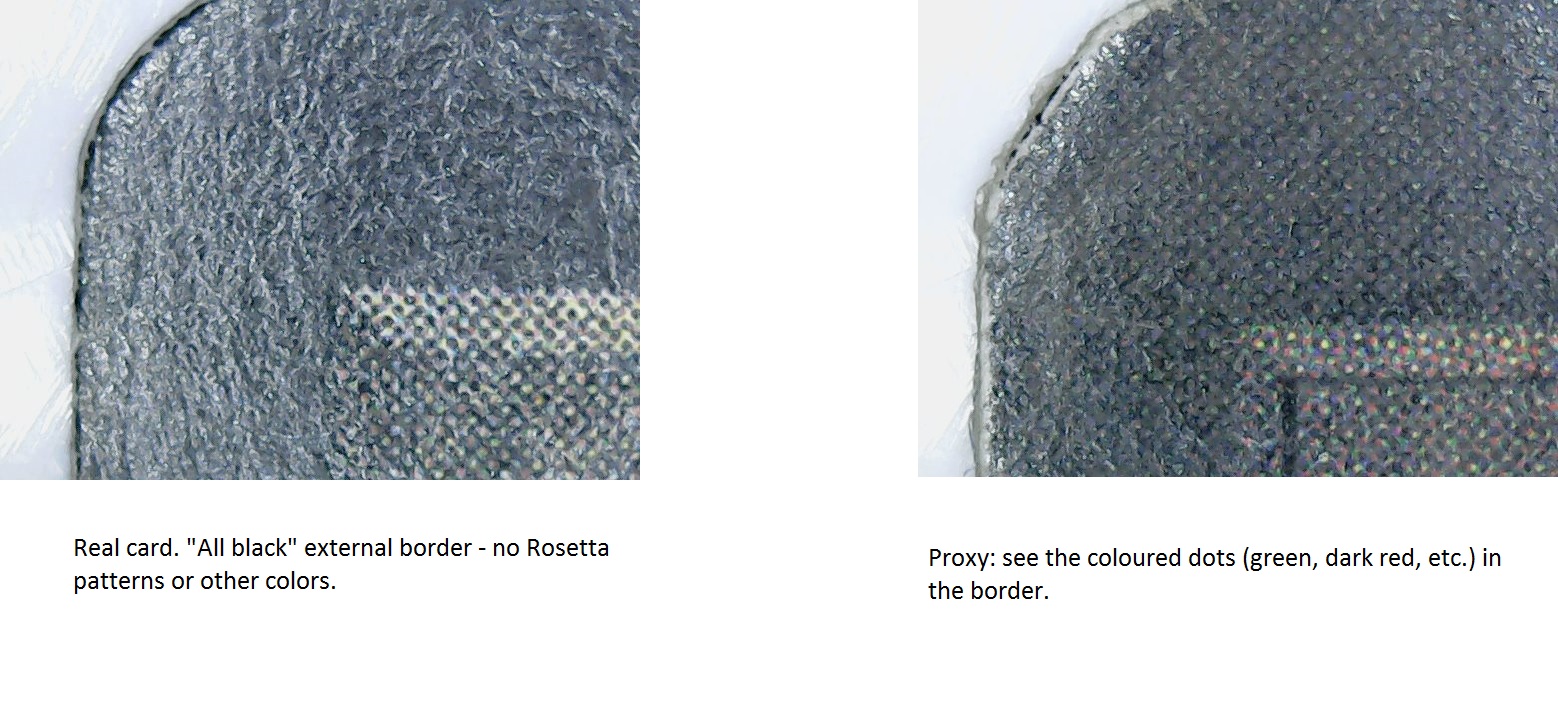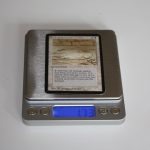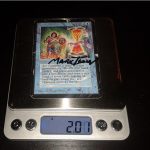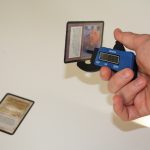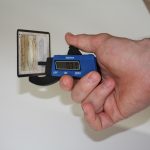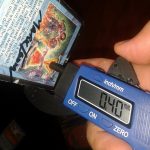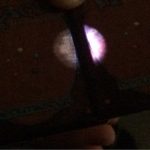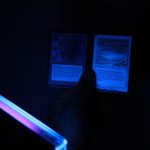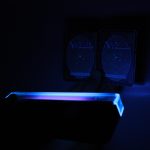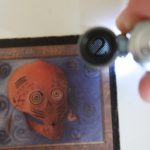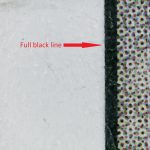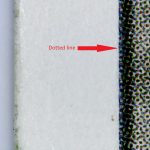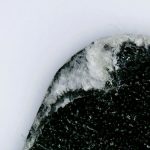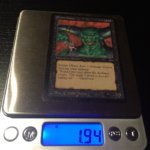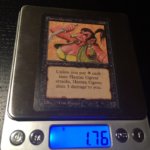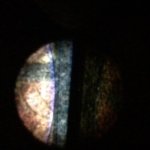How do we check your MTG cards?
As you will know if you are reading this lines, the secondary MTG cards market has been recently flooded by an impressive amount of high quality proxies.
How good are they? Well, I would say “very good” or “very, very good”, depending on your knowledge of the game. However, they are still far away from being able to fool someone that has been trading and playing more than 20 years. When I touch one of this fakes, a red alarm light start blinking in my head.
Purpose of this page is to describe several test that will help you to spot them. If you want to replicate this test by yourself you will need a few tools. They are not particularly expensive: the entry level price for the full kit would be around 100 USD, a negligible amount of money if you are interested in trading P9 and similar stuff.
Generally speaking, there are 3 types of forged Magic cards: “rebacked” cards (basically, 2 cards glued together), old proxies and new “blue core” proxies. The first 2 are really easy to spot because they almost invariably have a different weight and thickness. The latter type (new high quality “blue core” proxies) are somehow more tough because they have almost the same thickness and a very similar weight. However, the still have a totally different printing patter, a different, more “glossy” feel when you touch them and a different “penetrability” when exposed to strong direct light.
I will describe in the following section the tests that I perform to guarantee the authenticity or the cards I trade and their expected results. Feel free to contact me if you have questions or you want to give me your input on some topics.
Weight test
We check your MTG card weight against one of the same set
With this test we check with a high precision scale how much does the card weight. What is important here is not the absolute value, that can be influenced by several factors (humidity, characteristics of the scale, etc…) but the fact that 2 cards of the same set should have the same weight.
A standard Magic cards weight (on my scale) around 1.73 g – the variation is usually in the order of 0.02g.
This test is quick and easy and it is usually a good starting point. Rebacked cards (like the Alpha Timetwister in the third picture) normally fail this test. Also the new high quality proxies weight a bit more.
You can see a couple of examples in the pictures below. Please click on the thumbnail to see the full picture.
Thickness test
Is the card too thick or too thin?
Several categories of fakes cards will fail this test: for instance re-backed Collectors Edition (which also have a distinctive, glossy feeling like poker cards) as well as several type of old Chinese proxies. You can see an example in the third picture.
New high quality proxies have the same thickness but they retain a distinctive, different feeling (similar to Poker cards).
Here the test is similar to the weight test: is the thickness of the card the same of another card from the same set? The absolute value that you will get will depend on the quality and precision of the instrument used. However you should get a value around 0,30 mm.
Direct light & blacklight tests
The card is checked with different sources of black light and direct light
Another easy test that detect a very high number of counterfeits cards. Put the card you are checking side to side with another one of the same set (it’s here were you finally discover a meaningful use for your Benalish Heros and Pearled Unicorns).
The new blue core proxies fakes do not let the same amount of light cross them. This test can be brought to a very sophisticate level using an external flash connected to a camera in an artisanal black box. I will discuss more in detail about this technique in the future.
I also suggest you check your card using black light (also known as UV-A light or Wood’s lamp). Some fake cards fail this test. Use some other real cards as a reference when you do this test.
Lupe test
The card is carefully checked with a jeweller lens
Obviously, in this test you need to know what to look for. It is here that a vast knowledge about Magic cards comes handy. From the small white triangles near the black border of Alpha and Beta to the way the mana cost is printed (it is in solid black on a dotted background), several features of the card are checked.
Is the Rosetta printing pattern correct? Have the colours dots the correct shade? Probably this visual test is the most conclusive.
The new high quality blue core proxies fail this test: their printing pattern is different (for instance, the external border of a Revised dual land is solid black while the high quality proxies have a dotted pattern).
Microscope test
Probably my favorite tool!
It’s here where the real fun begins. For less than 50 dollars you can purchase a USB microscope and connect it with your PC. It’s a great tool and you should have it if you are serious about collecting vintage cards.
In the pictures you can see some examples. The first 2 pics are the external black border of a fake Revised dual land (an Underground Sea) and the border of the real one. Basically, it’s impossible not to see the difference: the fake has a dotted pattern while the real is solid black.
Have a look at the printing pattern of the rest of the card as well: the difference is obvious.
The third picture show the border of a played proxy. The paper it’s different – when consumed, it looks more frayed.
Some examples
Some fakes I’ve met in the last years
I will post some real life examples. I will start with a “too good to be true” Juzam at 200 USD.
Yes, it was fake.
Click on the picture below to see them full size.
Scammer selling fakes are artificially “aging” the cards. Common trick include creating shuffling wear, scratches, etc.
However, a worn-out proxy looks different. Below you will find the back of a forged Unlimited Black Lotus. The final result looks abnormal and artificial to a trained eye.
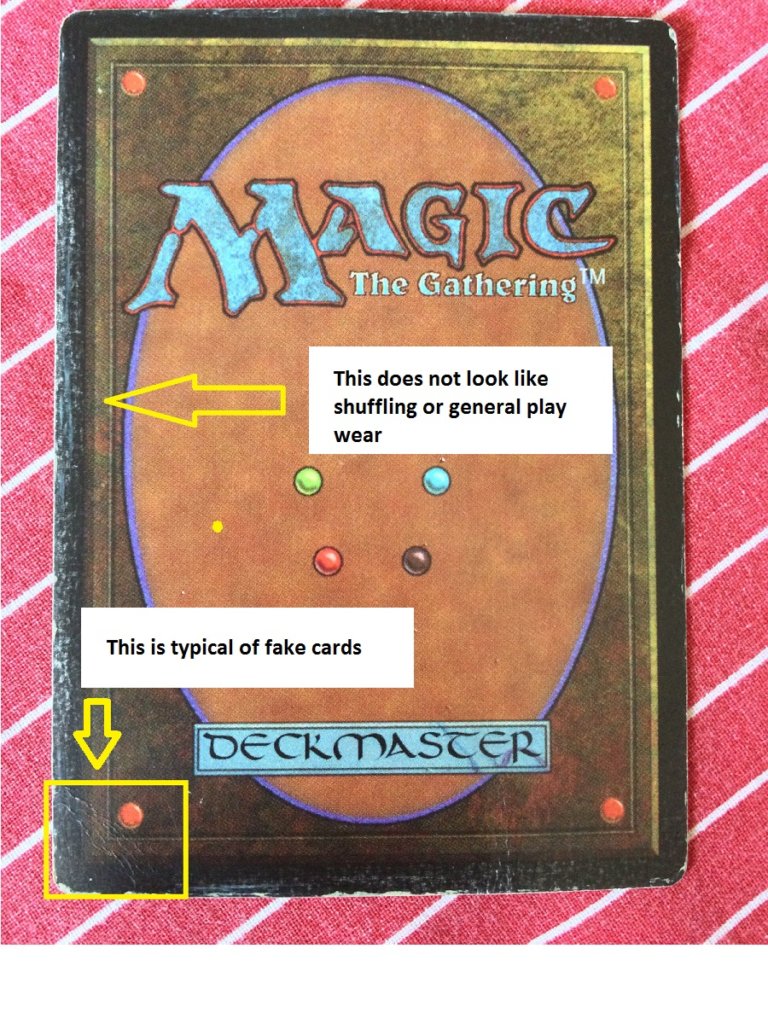
The next example is a fake Arabian Nights Drop of Honey – a card that was worth a few dollars and now sell for over 250.
Real on the left, fake on the right. Look the pattern:
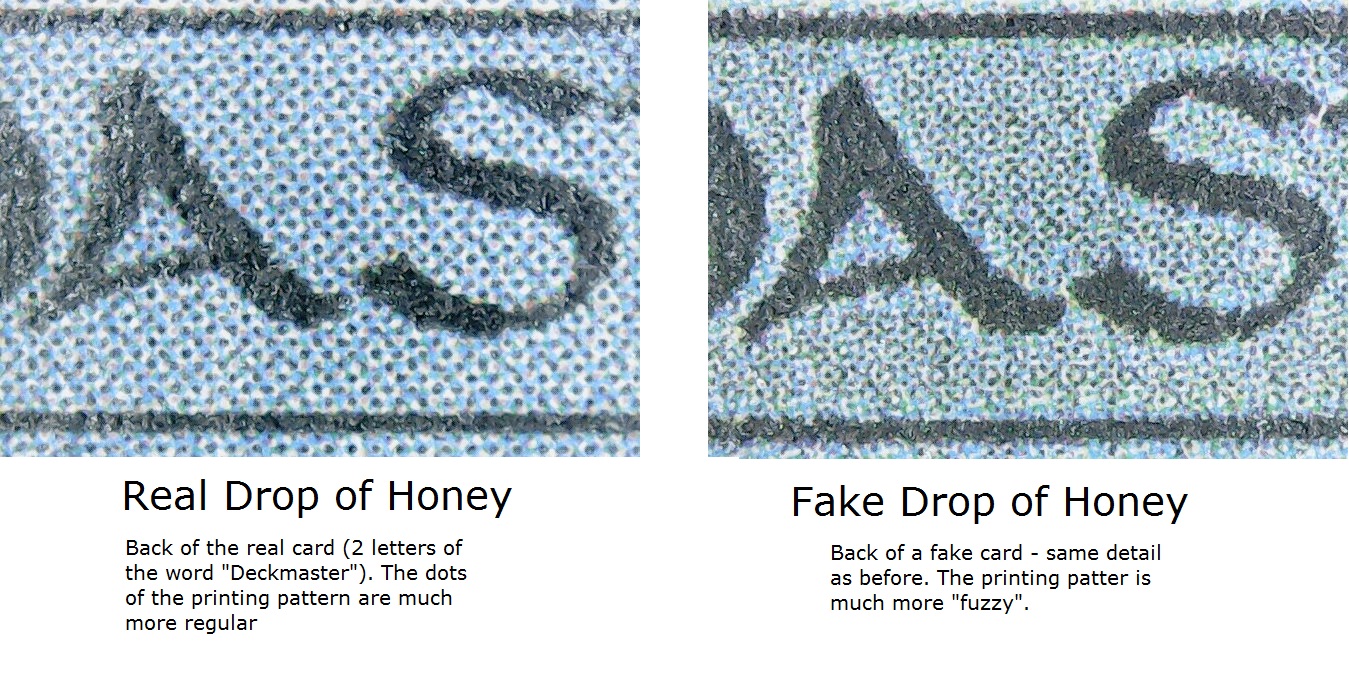
Here you can see a zoom on the mana symbol:
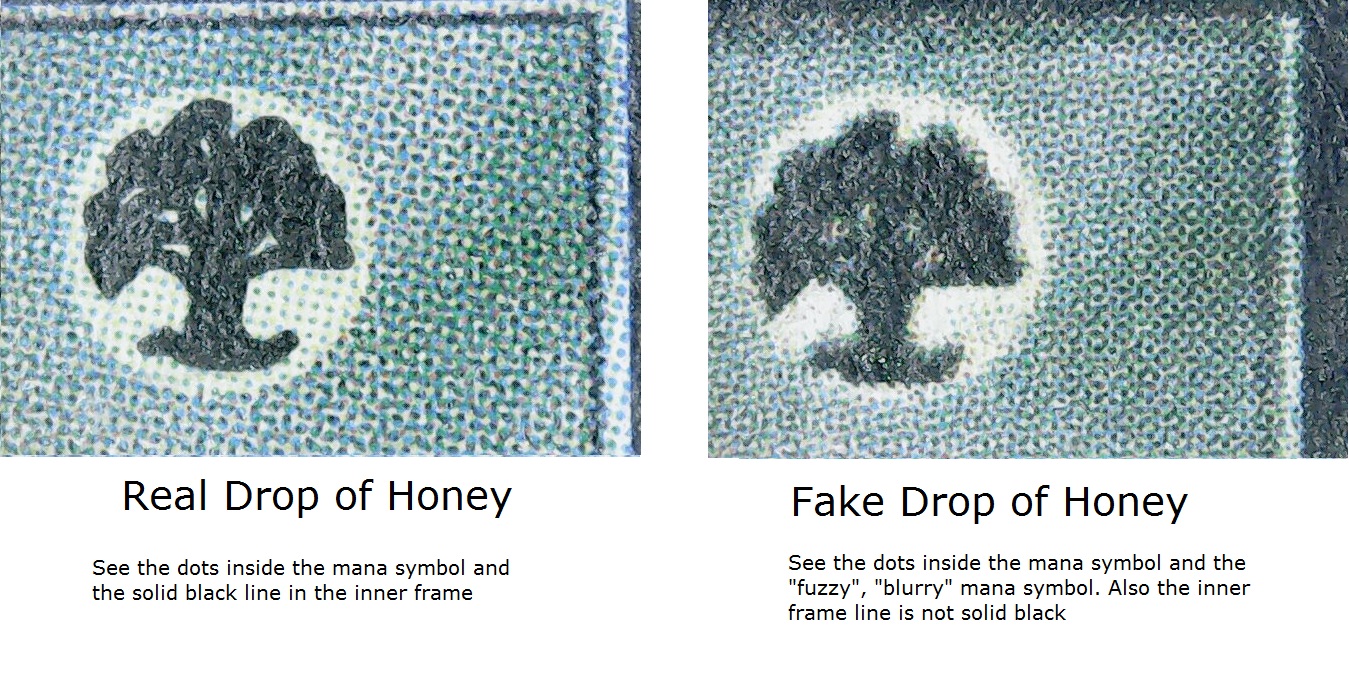
The next example is a rebacked card.
This is conceptually a bit more complicate – it’s a forgery in the sense that 2 real cards are glued together. It has been usually done with Collector’s Edition, to create fake Betas.
Rebacked cards fail 99% of times the weight test. Additionally, direct light test leave no doubt on the situation.
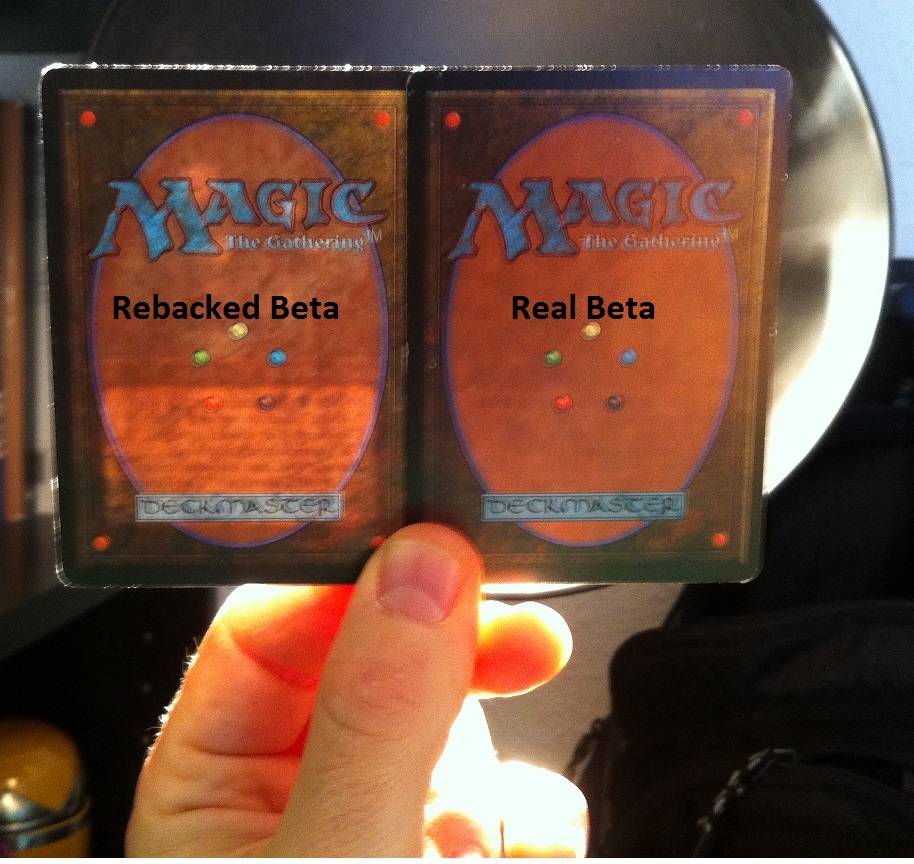
The next example is 2 fakes imperial recruiters coming (presumably) from 2 different counterfeiters trying to make my life harder and kill this game.
Both failed the light test – currently the majority of proxies are darker than the real cards. One was very easy to detect due to the “glossy”feeling like a poker card.
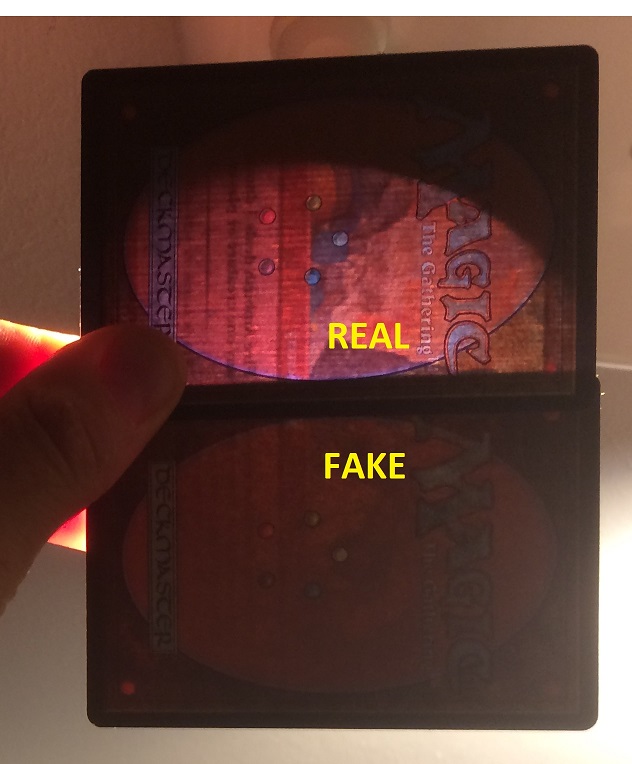
Let’s see now how they look magnified. The first picture below is from a real card from the set.
Real card: please notice the double external border, a thick black line and how the pattern in the mana symbol looks like.
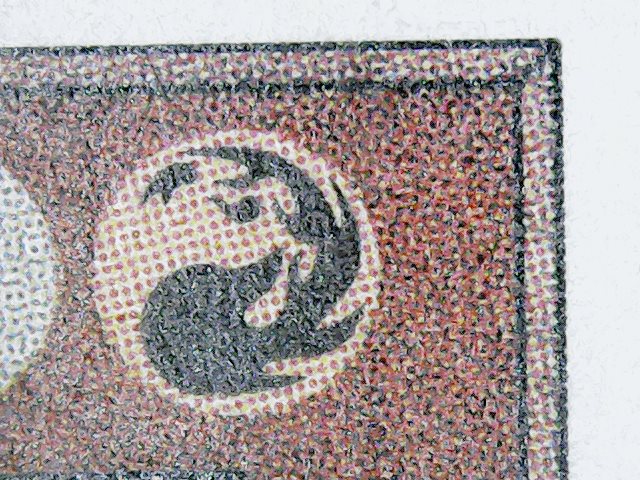
Fake number 1: this is easy to detect as the external border is not pure white. Additionally is missing the external black line. Also, the pattern in the red mana symbol is less defined.
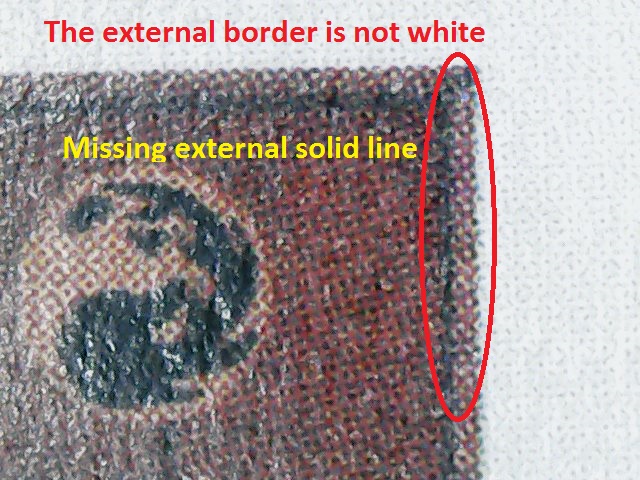
Fake number 1: here the external border is less defined, but the external border is still clearly wrong.
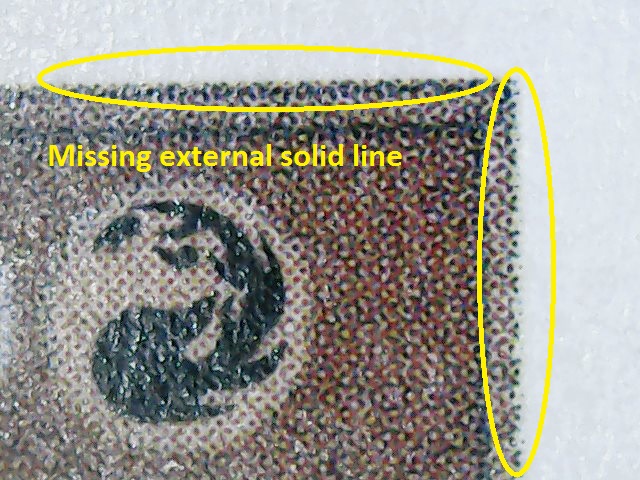
And now a some pictures about a fake Ancestral Recall. This was an old proxy, very easy to detect (extremely lighter and missing the blue core).
You can easily see that the difference is huge.
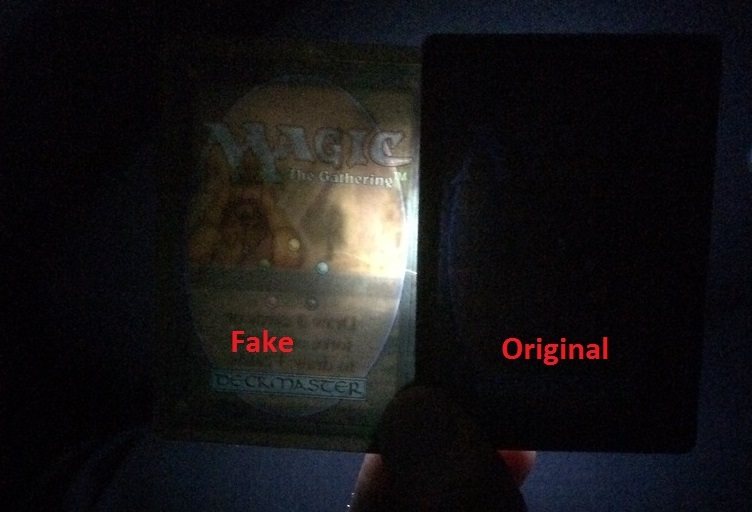
Let’s see how it looks like magnified starting with with the letters of the name of the card. Note how the counterfeit Ancestral is much more dark respect to the original (no black dots inside a white letter)
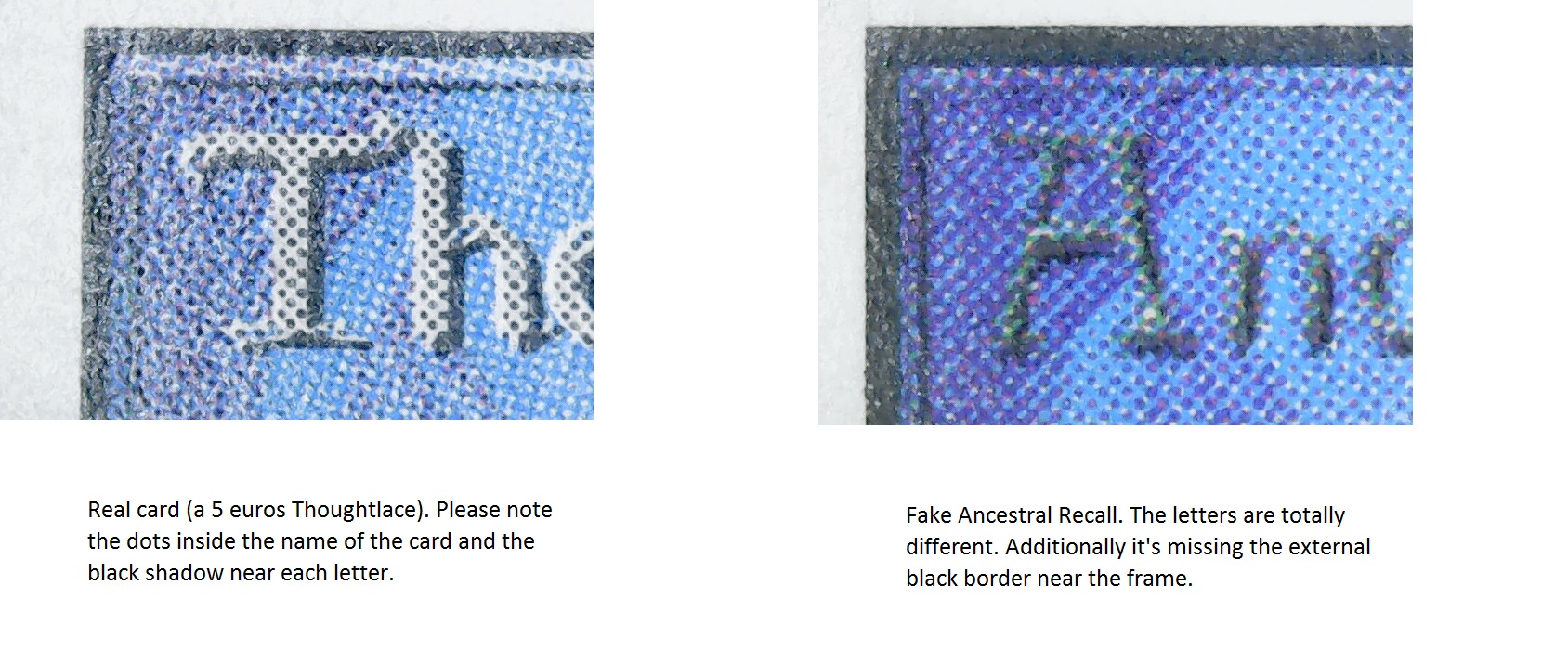
Another standard check is the mana symbol – failed as well.
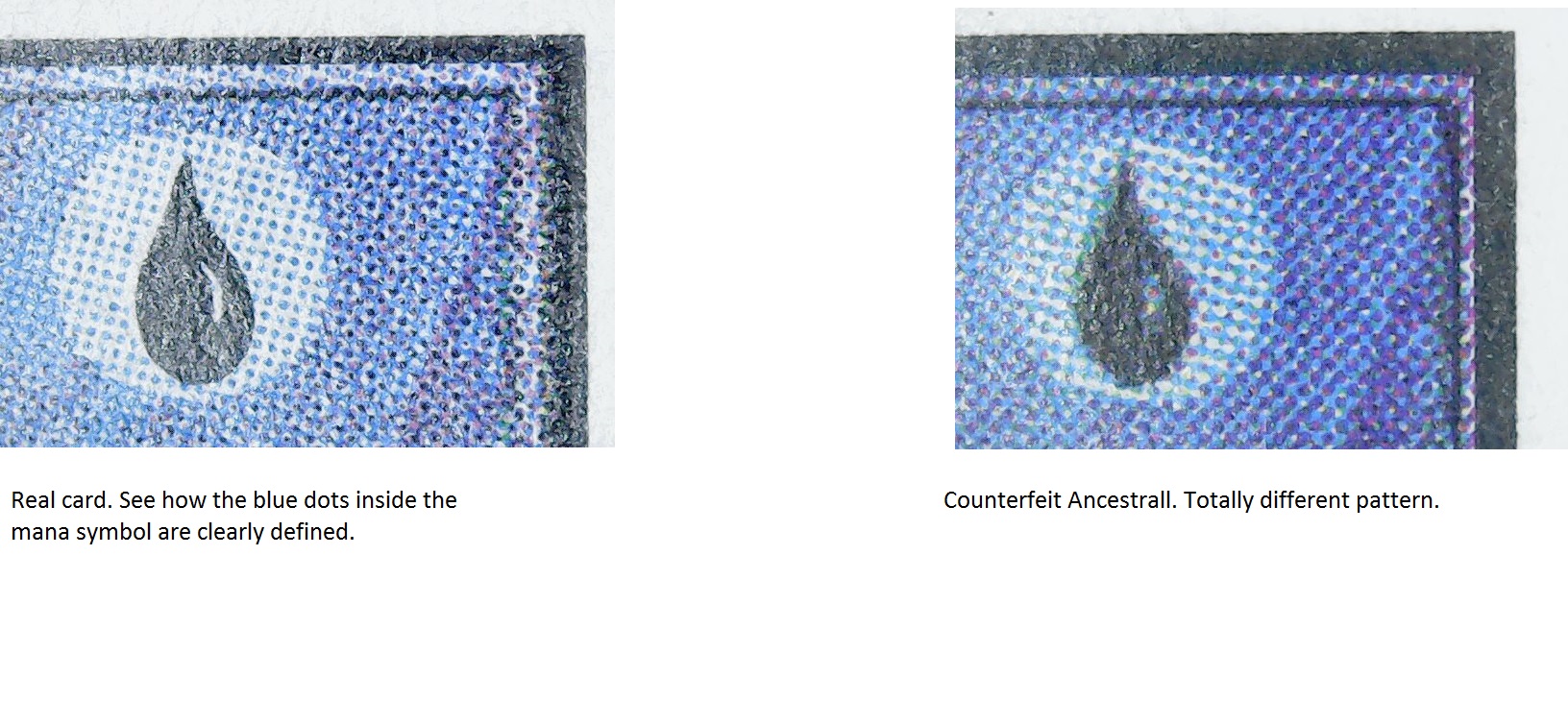
Finally the back of the card. See how in the proxy even the border is wrong – it is not totally black.
